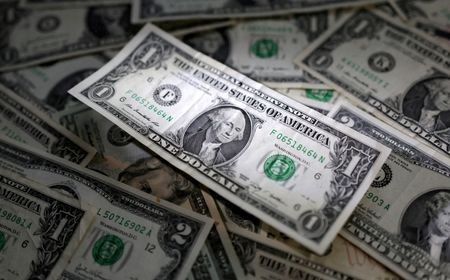




Philippines Trade Update: Trade trajectories trend along
 DOWNLOAD
DOWNLOAD

Policy Rate Updates: Double cut finale
 DOWNLOAD
DOWNLOAD

Monthly Economic Update: One for the road
 DOWNLOAD
DOWNLOAD


US recap: Dollar off its CPI-led lows, with haven yen the big winner

May 10 (Reuters) – The dollar dove with Treasury yields in the initial response to CPI data that dashed some expectations it would be hot enough to buttress the Fed’s stance that H2 rate cuts are unlikely, but risk-off flows and book-squaring helped it cut its early losses, except against the haven yen.
Two-year Treasury yields fell 12 basis points (bps) on the US inflation data, which was marginally weaker than expected overall on a year-on-year basis and the lowest in two years. But the main drag on yields likely derived from a modest 0.1% month-on-month rise in the Fed’s favored core services ex-housing metric versus a 0.4% rise in March.
Also weighing on risk and helping the haven dollar recover, except against the yen, was the fleeting rally in stocks in response to falling interest rates amid renewed weakness in regional bank stocks.
The haven yen was the main beneficiary of the slide in stocks, as well as falling yields in the US and elsewhere since JGB yields barely move, or trade, due to the BoJ’s yield curve control and QE.
There is widespread speculation the BoJ’s current policy review, amid well-above-target inflation, will eventually favor higher JGB yields.
A Nikkei article on Wednesday noting Japanese life insurers’ bias toward trimming Treasury holdings in favor of JGBs, partly due to the high cost of hedging FX risk, though a medium-term concern, likely provided one more reason to exit hefty spec USD/JPY longs and yen shorts in general.
USD/JPY fell 0.7% and was threatening a bearish sub-kijun close.
EUR/USD swung from earlier losses to post-CPI gains only to slip back to a modest 0.15% rise after risk-off flows helped the haven dollar bids.
Sterling’s post-CPI surge to new 1-year highs also evaporated in the derisking mist and ahead of the BoE Thursday.
(Editing by Burton Frierson; Randolph Donney is a Reuters market analyst. The views expressed are his own.)
This article originally appeared on reuters.com





 By Reuters
By Reuters